What is this CURE about:
The overarching goal of this CURE is to examine the distribution of microplastic pollution and its impacts on coastal organisms in estuaries with contrasting amounts of urbanization. We hypothesize that more urbanized estuaries will contain a higher concentration of microplastic debris in both the water column and estuarine sediments. Students participate in three one-day research cruises: (1) A half-day trial cruise in the Tar River in Greenville, NC to test out sampling gear; (2) A cruise sampling the mouth of the Pamlico River (i.e., a less urbanized estuary), and; (3) A cruise sampling the mouth of the Neuse River (i.e., a more urbanized estuary). During each cruise, water quality samples were collected for laboratory analysis. Also, a YSI water quality meter and a secchi disk are used to measure additional water quality variables in situ. In addition, samples of mesozooplankton and benthic macrofauna are collected, respectively, with a neustonic plankton net and a ponar grab sampler. Organisms are enumerated and identified to higher taxonomic levels during subsequent labs. Also, students learn how to operate a ZooScan, a novel instrument that uses machine-learning algorithms to semi-automatically identify zooplankton taxa. Lastly, fishes are dissected and their stomach contents are inspected to assess ingestion rates of microplastics. Students analyze data gathered during two computer lab sessions, in which they are introduced to the scientific computing program MATLAB.

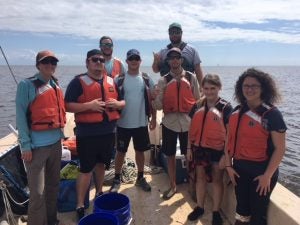
2021 Update: Due to the ongoing COVID-19 pandemic, this CURE will look different than in the past. This reflects the fact that social distancing restrictions prevent us from engaging in boat-based field trips. The CURE will instead focus on examining the influence of environmental variability on a 35-year time series of fish larvae collected weekly from Beaufort Inlet, NC. Students will work in teams to analyze data on two species each and develop their own hypotheses to test using this dataset.
Photos from this CURE:
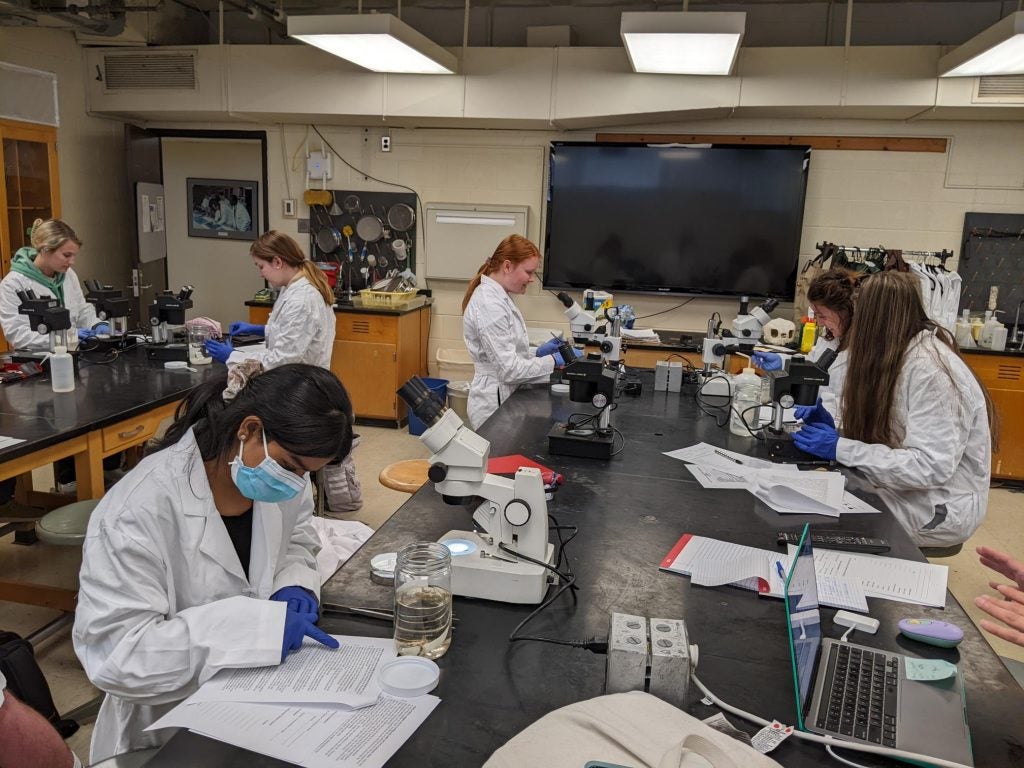
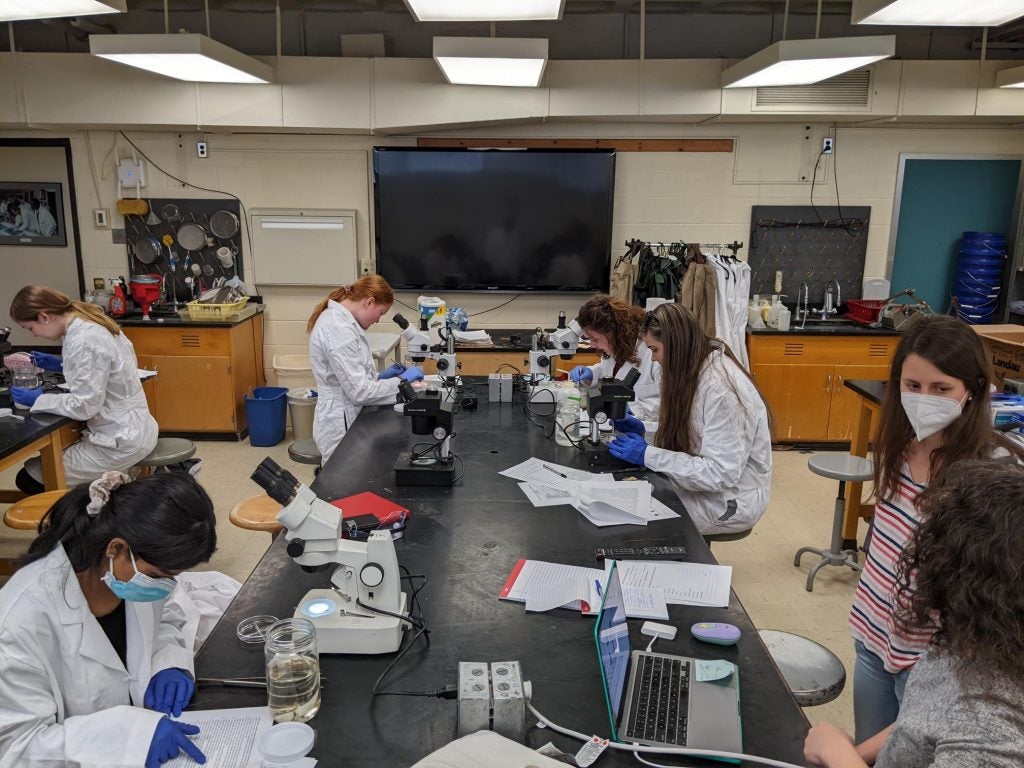
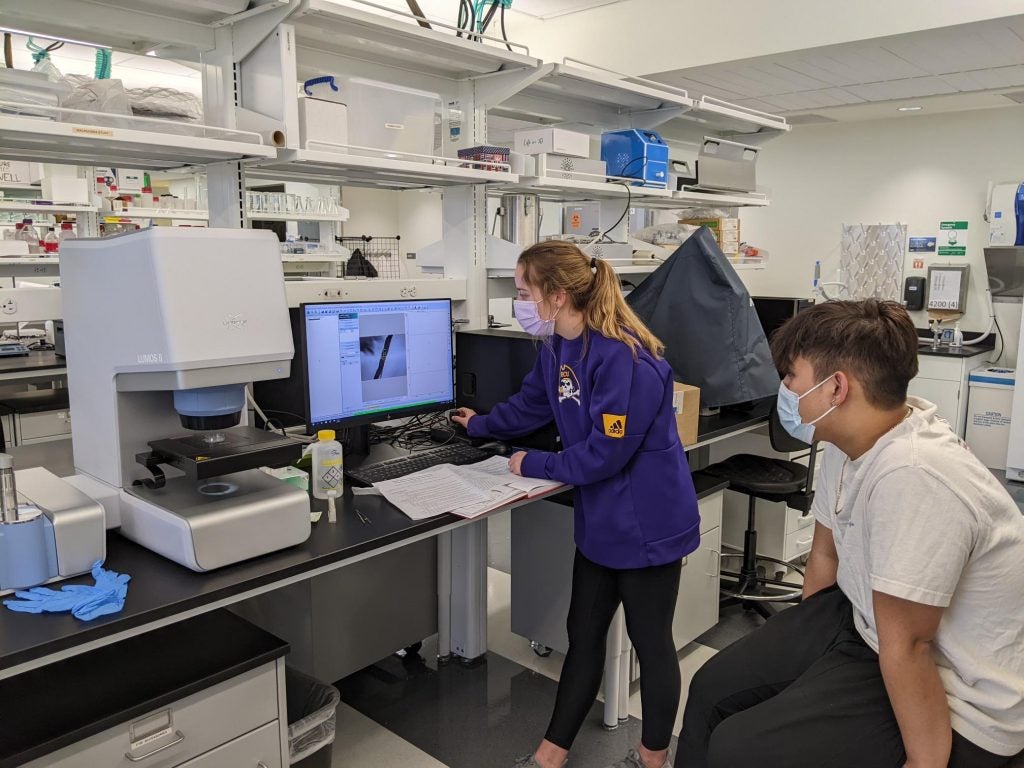
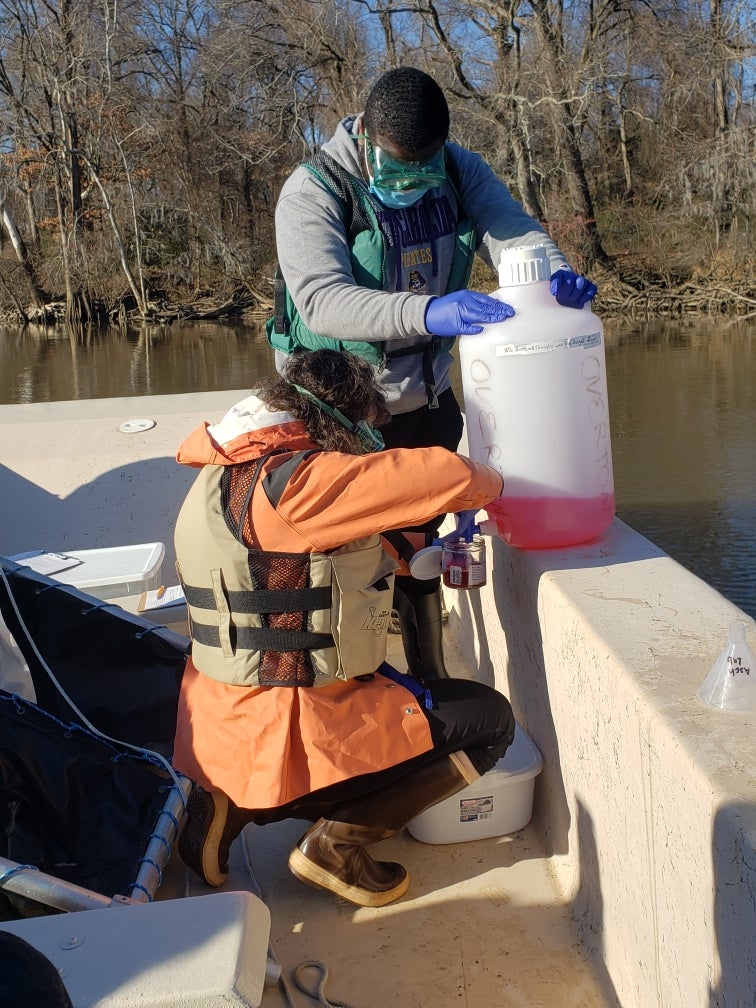
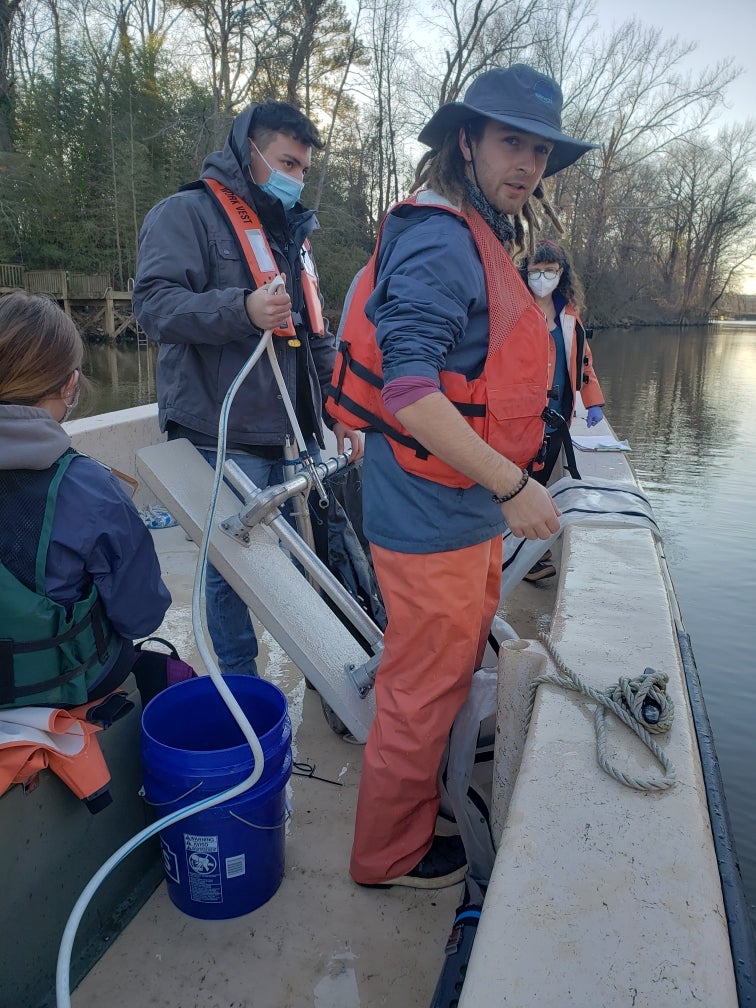

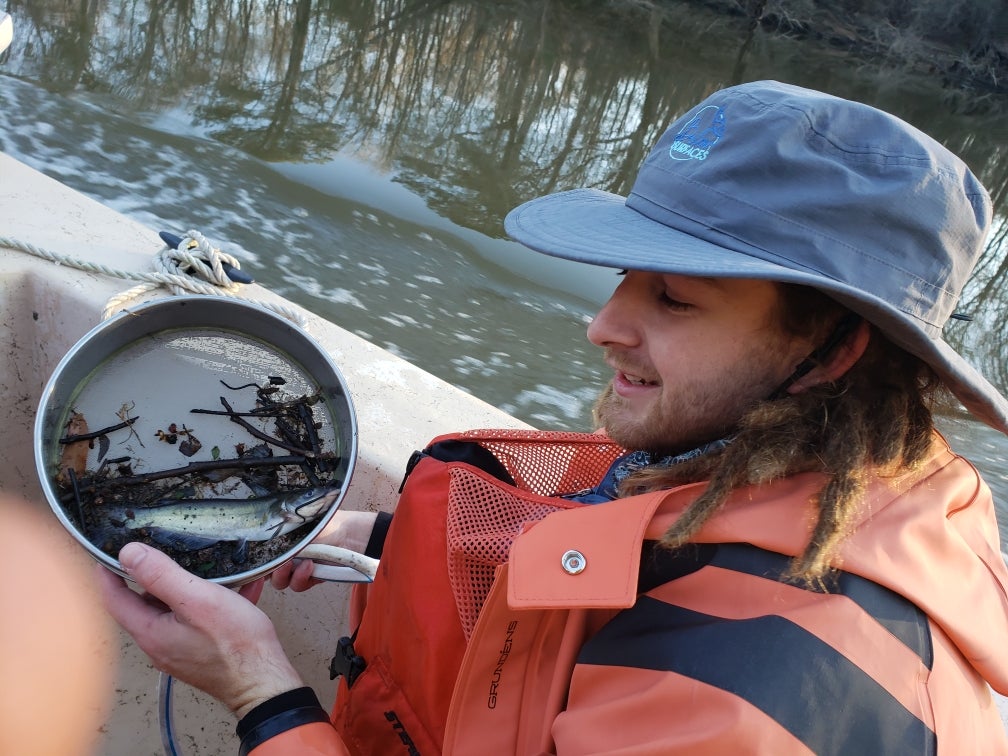
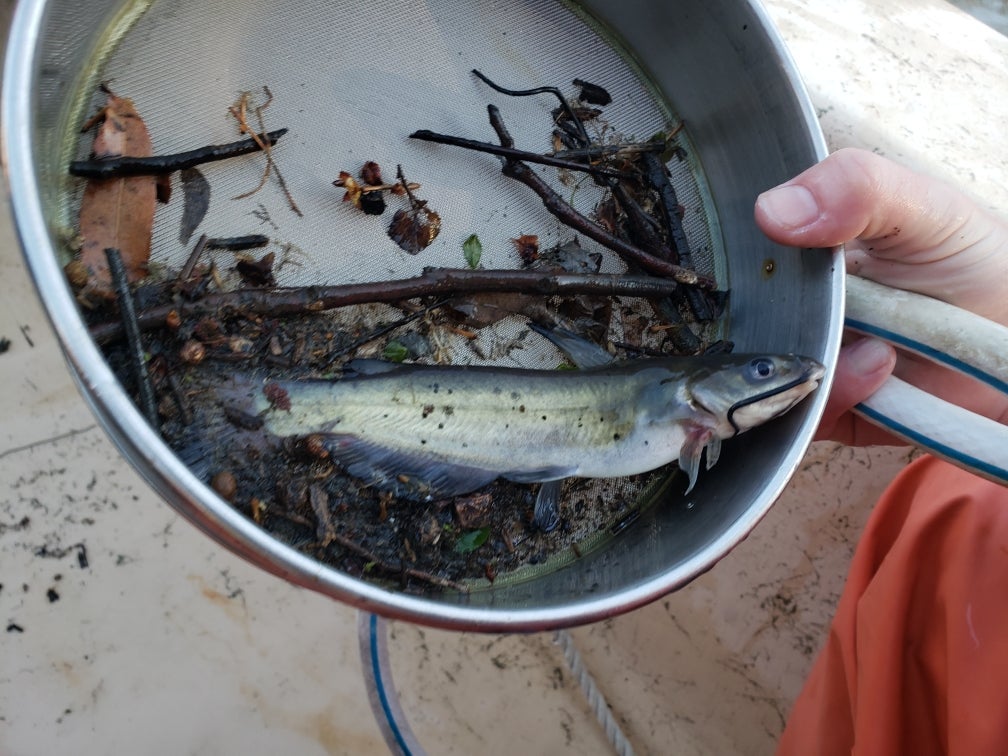
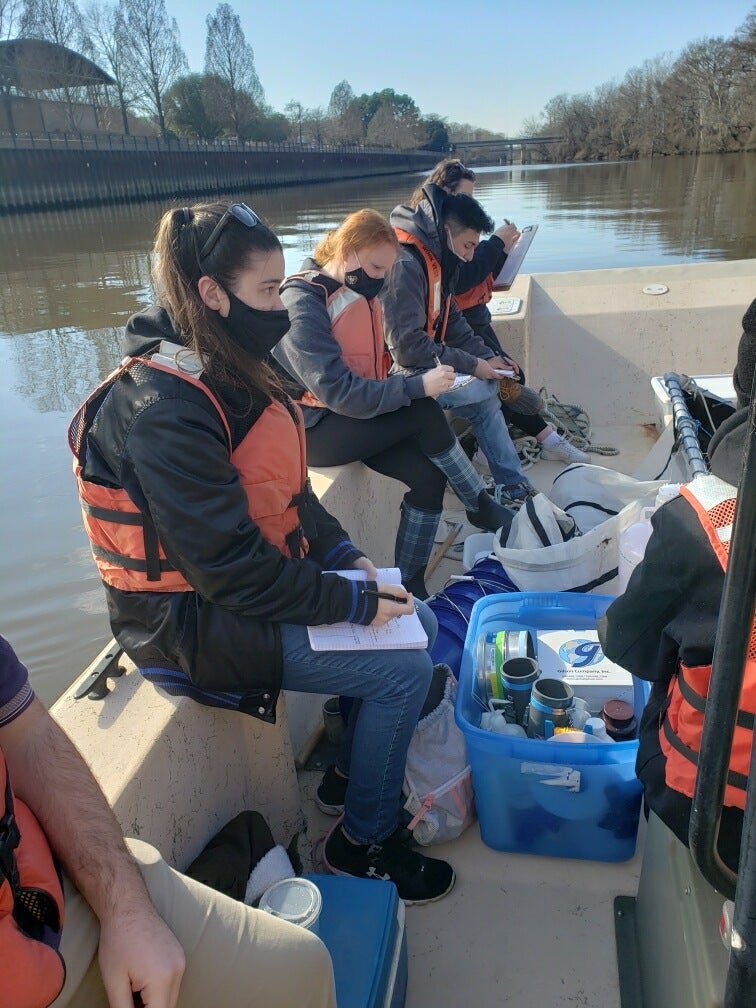
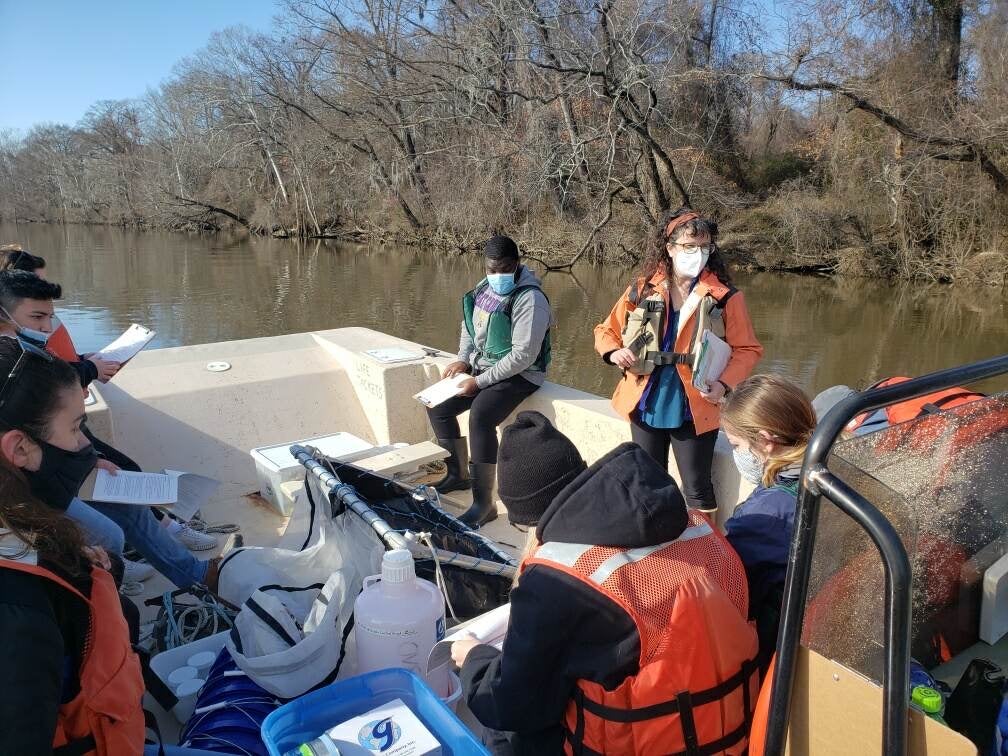

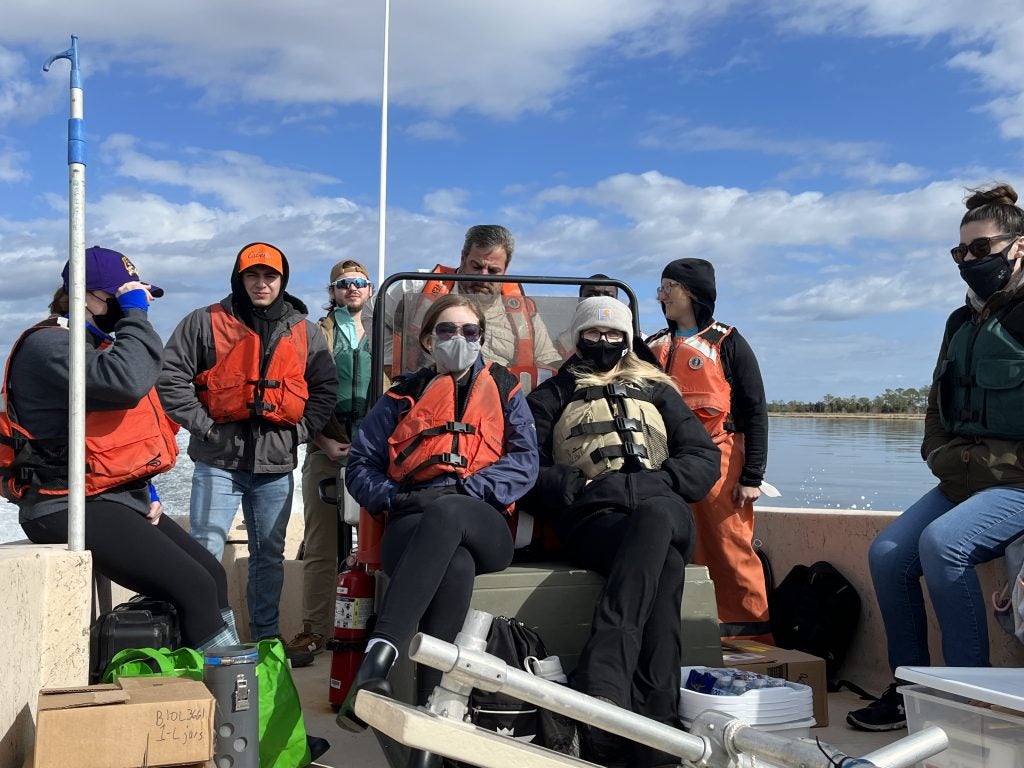

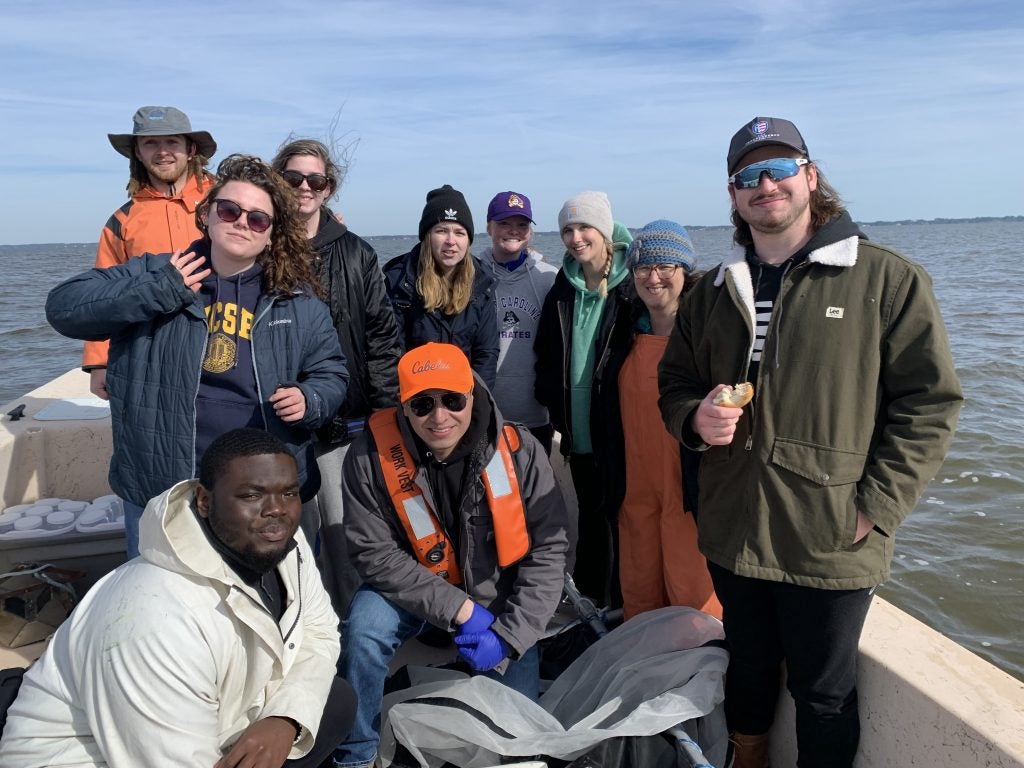

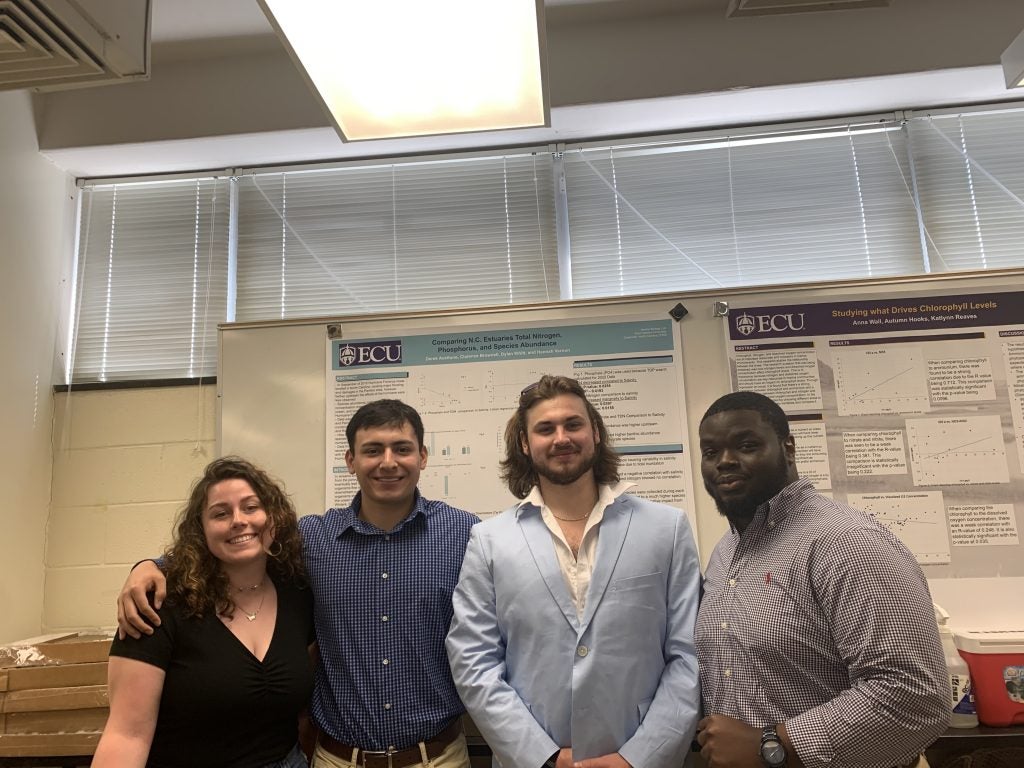
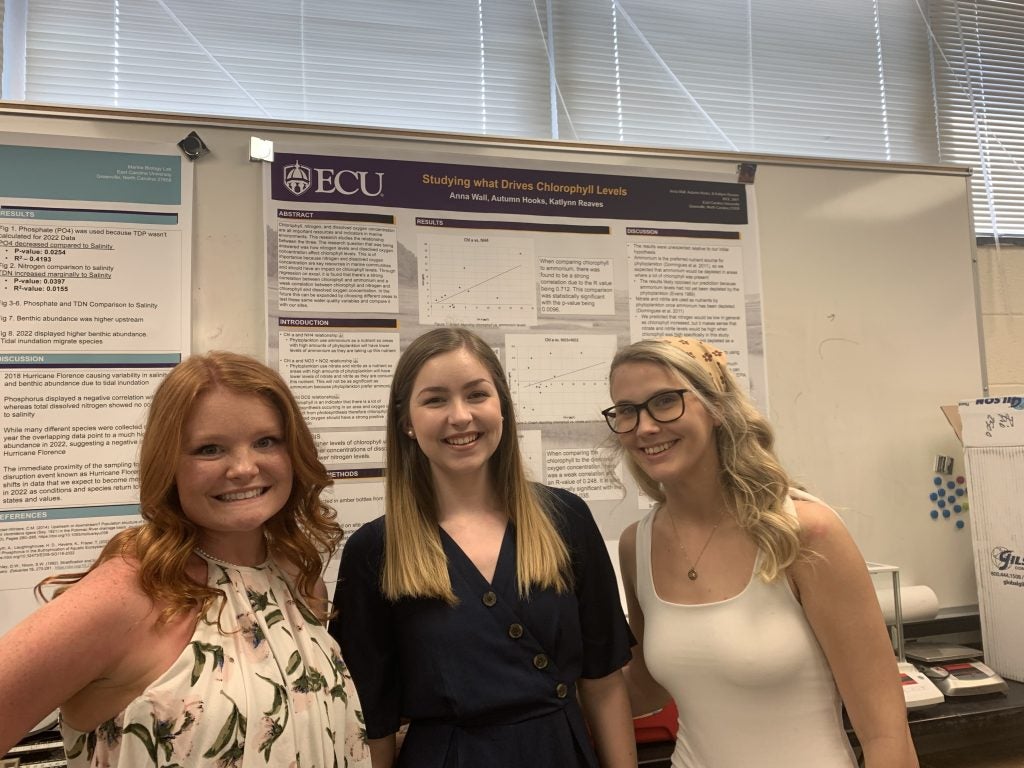

This week marine biology lab students are comparing how YSI data is compared to depth. Students are making interpretations on temperature, dissolved oxygen, chlorophyll, pH, and salinity as they change with the depth of the estuary. It is important to study these changes in these oceanic variables because it can leave clues to biological explanations for what is going on during a given time of year.
This week, marine biology students are going to be comparing YSI data to changes in depth of the Newport River estuary . Students are going to make interpretations on changes in temperature, salinity, pH, dissolved oxygen, and chlorophyll to the depth profile. It is important to study changes in these oceanic variables because they can leave clues to biological explanations for what is going on in the estuary during a give time. An example of a seasonal change that might be interpreted during this analysis might be the high presence of phytoplankton that typically have spring blooms.
Students in Marine Biology are going to be analyzing biodiversity this week. Students will have the opportunity to use their target species from their research projects and be able to calculate species richness and evenness for the Newport River Estuary. It is important for fisheries to know how diverse a marine community is because in the science literature high diversity has been connected to successful production.
Marine Biology students went out on the R/V Toadfish to learn about different types of equipment used in the field. Our first trip went out on the Tar River, right down the road from campus! Examples of some equipment used are the manta bongo net that samples surface plankton, and PONAR benthic grabs to look for sediment quality, benthic organisms, and micro-plastics.